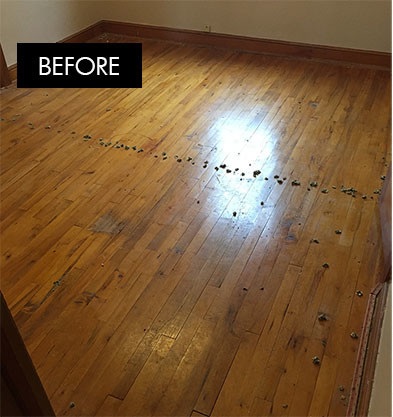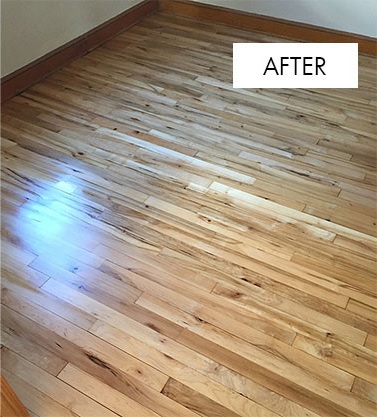Hardwood floors can make any home look more sophisticated and add some old style charm. The one thing that many people are often concerned about when they build or buy a home with hardwood floors is how to properly care for them. The job of maintaining a home with hardwood floors in it may seem daunting, but as long as they are regularly maintained, hardwood floors are durable, and can last dozens of years longer than a traditionally carpeted floor.
As time passes, a number of factors can contribute to the deterioration of your hardwood floors. Humidity from the air can cause floorboards to expand and contract, which may cause gaps and squeaks in floorboards and squeaky stairs, as well. Wear and tear can cause damage to hardwood floors, too. If not properly cared for, you can end up with dents and scratches in your hardwood floors. Mishaps and accidents can also cause floors to become damaged, thus resulting in repairs of your hardwood floor.
While it’s rare, dents and scratches can be so deep that it’s necessary to pull up portions of the floor and replace the floorboards. Squeaky hardwood floors need immediate attention as well. A squeak may add some charm to an older home with hardwood floors, but as any homeowner with a hardwood floor knows, it can also be an annoyance. Loose floorboards or cracks in the boards should not be taken lightly.
One of the biggest struggles that homeowners have with their hardwood floors is deciding when a floor needs recoated or refinished. Hardwood floors can go years without needing any special attention outside of mopping, sweeping, and regular vacuuming. Much more than that and you may be over-maintaining your hardwood floors.
For some homeowners, the decision to recoat or refinish can be a confusing one. There are a few noticeable differences in recoating and refinishing which, once understood, may help you make the decision the right decision for your hardwood floor. Each option will give you the same result: a beautiful, long lasting hardwood floor.
When you recoat a floor, you are taking the finish off of the floor and bringing it down to its last known stain color and applying a new layer of stain as well as finish. Recoating is an option if you’d like to update the look of your floor or have made some minor repairs to your hardwood floor. Removing scratches, filling gaps, or patching a hardwood floor can be reasons for recoating a hardwood floor. Recoating a hardwood floor will also restore the shine of the hardwood floor and remove any discolorations that may have shown up over the years.
Recoating a hardwood floor is a pretty clear-cut process that involves a thorough cleaning and light sanding of the floor to remove the previous finish. Once you’ve finished sanding, another thorough cleaning is in order to prevent bits of sawdust and dirt in the new stain and finish.
Refinishing, on the other hand, can be a bit more work. Many homeowners choose to have their floors professionally refinished rather than take on the task themselves. Refinishing involves the same thorough cleaning process, but when it comes to sanding, the floor is prepped with a more intense sanding process. The goal is to get the wood down to fresh unstained wood in order to apply new stain and finish.
Why would anyone choose to refinish when they could simply recoat? The answer to that lies in the condition of the hardwood floor. If the floor has deep scratches, damage, or has even been waxed, it is necessary to refinish. A floor that has a waxed finish cannot be recoated due to the fact that the newer urethane finishes will not adhere to the floor properly. If the floor has been damaged extensively, it will need to be repaired. That may involve pulling up portions of the floor. A recoating of the repaired sections won’t always match the existing stain and finish.
The importance of caring for your hardwood floor extends far beyond keeping it beautiful. If cared for properly, a hardwood floor that has received the care and attention it deserves will add value to your home, keep it warm, and reduce the number of times it needs recoating or refinishing.



